Does Condor SS Work
With Piers?
If your home has piers and is still showing seasonal movement, stabilization with Condor SS can
most likely greatly improve this situation or eliminate the problem altogether. This is true whether the piers were installed as part of the original
construction or installed after foundation problems have been encountered. Since the expansive clay is
still expanding and contracting and lifting your home,
Condor SS will drive the excess water out of the clay improve the average
strength of soil thus enabling your homes piers
to work properly. A quality, patented, and guaranteed stabilizer
such as Condor SS
will ensure your home never moves excessively again.
If you are unfamiliar with residential pier failures, just place "foundation
pier failed failures" into your favorite web browser and read the stories.
It appears that all of the people in the business of remedial foundation repair
are quick to point out the problems or failures of "someone else's" way of doing
things. Unfortunately, all of them are correct because all of the standard
methods have experienced failures.
How Piers Can Fail
Even a pier foundation system requires proper design coupled with either stable soil or rock to work properly. If the soil or
rock does not have the required compressive shear strength, the pier will, over
time sink, into the ground. Expansive clay soils can also lift a
pier if the pier is not properly designed. Although piers are mostly used to provide support
against vertical movement, they also provide a degree of support against
horizontal movement of the foundation. For a pier that is relying on the
strength of clay soil, it is critical that the pier is deep enough to avoid the
seasonal variations in moisture of the soil. It is reported by the U.S.
Army Corps of Engineers that the depth of stable moisture content in Central
Oklahoma can be as deep as 15 feet. Were your piers installed to that depth or
deeper? If not, a pier may perform very well
for quite a number of years and yet fail when the soil goes through extreme wet
or dry conditions caused by climatic changes or large trees. Knowing the proper depth to avoid
significant moisture changes requires the skills of a geotechnical engineer who
is knowledgeable of the long-term characteristics of the soil in your specific
region.
Many builders assume that if a pier is resting on rock it will remain stable.
Unfortunately, not all rock is the same! In Oklahoma, finding a good stable and permanent load bearing rock layer can
be quite difficult. Many parts of Oklahoma have thin rock formations consisting
primarily of shale or sandstone. While shale or sandstone can have adequate
strength properties for pier support, one must be assured that there is an
adequate thickness of the rock to be of significance. It is common for the
layer of shale or sandstone to be less than one foot in thickness with clay
underlying the thin rock formation. The other problem with shale and
sandstone is the fact that they can loose significant strength when subjected to
excessive water. Of
course, the rock thickness and characteristics can only be determined by borings and analysis by a
geotechnical engineer. While geotechnical soil borings may be required for larger
commercial structures, most of the time such borings are not done for houses or
light commercial buildings due to the expense. Therefore, the designer of a pier system who has no
soil boring data is merely guessing at the support capabilities of the rock or
soil. Is 10 feet deep enough, 20 feet, 40 feet?
While stabilization with Condor SS after a structure has already shifted may not eliminate the need for retroactive
underpinning with piers to lift portions of the structure back into place, it does
compliment piers by “fixing” what is wrong with the clay soil, thus lessening the
forces acting on the piers and foundation. Of course, a hybrid blend of piers and chemical stabilization is the most cost effective,
efficient, long lasting and dependable method known. If you value your home or
commercial property, you
cannot do better than this one-two punch of stabilization. It simply addresses
all of the concerns at once.
Residential Piers
Many commercial structures utilize pier designs where the cylindrical drilled
pier is widened out (belled) at the bottom of the pier hole. (See drawing to the
right) This solves two
problems.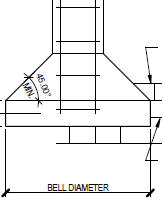 First, the belled pier has a much larger surface area to provide
better support in weak soils. Second, belling the bottom of the hole in clay
soils prevents the clay from pushing the pier upwards due to swelling clay
along the vertical shaft of the pier. That's right,
the clay can actually lift or jack the pier out of the ground. Unfortunately, most light commercial construction and homes with piers do not
First, the belled pier has a much larger surface area to provide
better support in weak soils. Second, belling the bottom of the hole in clay
soils prevents the clay from pushing the pier upwards due to swelling clay
along the vertical shaft of the pier. That's right,
the clay can actually lift or jack the pier out of the ground. Unfortunately, most light commercial construction and homes with piers do not
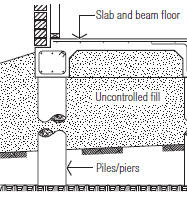 widen (bell) out the bottom of the drilled pier column. (See drawing to the
left) This means that, if the
pier column is not resting on stable thick rock or is not deep enough to have a
significant portion of the pier in a stable clay moisture zone, the clay can
pull the pier vertically or cause the pier to sink. Condor SS can provide
stability for your homes piers and in addition, provide the equivalent of a
continuous deep pier for your home or building. This is because the Condor SS
can completely stabilize the critical zone of clay between the surface and 10-12
feet deep, the zone that would normally be subjected to moisture changes during extreme
wet or drought cycles.
widen (bell) out the bottom of the drilled pier column. (See drawing to the
left) This means that, if the
pier column is not resting on stable thick rock or is not deep enough to have a
significant portion of the pier in a stable clay moisture zone, the clay can
pull the pier vertically or cause the pier to sink. Condor SS can provide
stability for your homes piers and in addition, provide the equivalent of a
continuous deep pier for your home or building. This is because the Condor SS
can completely stabilize the critical zone of clay between the surface and 10-12
feet deep, the zone that would normally be subjected to moisture changes during extreme
wet or drought cycles.
Post
Construction Installation of Driven or Pushed Piers
If a building without piers subsides (sinks) after construction, restorative piering methods are used. Some restorative piers installed after a building
construction utilize driven concrete or steel piers. Although many installers
use hydraulic means to press the pier into the ground, they would still be
considered a driven pier or pile. One problem encountered with post construction
driven concrete or steel piers occurs when the clay soil
contracts away from the pier. When the clay soil contracts away from a steel pier, it
leaves the steel exposed to moisture and oxygen. This leaves steel piers open to
the devastating effects of oxidation or galvanic corrosion, which then causes
rust and loss of metal. Of course, most installers of steel piers use large
steel posts. The corrosion can eventually result in loss of some strength in the
pier but the large quantity of steel present should provide for a long life in
most soil conditions. Even those installers that use stainless steel pipe or
posts still have the problems of lost support even if they do not corrode away.
Another problem however may manifest itself when the clay
dries out and pulls away from the side of the pier. Losing the soil support
along the sides of the piers can reduce the original frictional forces that
allowed the pier to support the foundation. The loss of support of the soil for
the pier can cause the pier to settle. If the pier settles, this can place more
stress on the foundation grade beams and also require the piering contractor to
come back in to lift the foundation back into place again. Many times the owner
may notice foundation
cracking in new locations because the foundation had inadequate steel rebar
reinforcement to begin with. Condor SS soil stabilizer helps your piers be much
more effective by preventing the soil from contracting away from the piers and
foundation. Not only that, Condor SS provides the equivalent of a continuous
deep pier under your home or building. This provides for improvements in both
vertical and lateral stability of the foundation.
The greatest problem with piers installed on existing homes or buildings is
the methods used to install the piers. Since the initial installation
uses pressure to push the pier into the ground, proper pressures must be used to
drive the pier to an adequate depth. To perform properly these "pressed into
place" piers must have moisture contents in the soil that will allow pushing the
pier to a minimum depth of 20 feet or bedrock without lifting the house. Many
times these depths cannot be achieved.
For a more in depth engineering analysis of various post construction pier
types, you may want to read the following
engineering
paper
analyzing various underpinning techniques
along with their strengths and weaknesses. If you wish, read this
non-technical paper from the
The Foundation Performance Association on what their committees have found
to be problems with all of the standard "fixes" used by foundation contractors.
For the sake of argument, let us assume the pier is installed
perfectly and has adequate strength to support the foundation without
foundation damage. Possibly it was installed to bedrock. What about the
clay that still rests against the foundation and floor slab? When it
gets wet, it will still swell. If the remediation contractor installs
the piering during dry spells, the swelling clay will merely lift the
foundation and floor slab off of the pier. For jacked piers that are
bolted to a flange attached to the foundation, the foundation and pier
will just be lifted out of the ground. For the pushed pipe or concrete
piers that are made up of segments, the piering system cannot restrain
any upward vertical movement. Why will the piers not restrain the upward
vertical movement? That is because the swelling pressures of many clays
greatly exceed the restraining forces of the building weight or pier
itself. The swelling clay has even been found
to break the large reinforcing bars used in commercial construction with
drilled piers!!! This why even large commercial buildings with
clay soil beneath the structure have to reinforce the concrete as if it
was a self-supporting slab and foundation. For more information go to
Sure-Void's website where there is
also an excellent video that expains this problem.
If the contractor installs the piering with excess moisture beneath
the slab and foundation, when the clay dries, it will shrink. To prevent
foundation or slab failure, adequate steel reinforcement must be used.
The reinforcement required goes way beyond the standard steel wire mesh,
steel rebar, or fiber-reinforced concrete typically used. Even
post-tensioned slabs unless properly designed and installed will fail.
The Bottom Line
All of this discussion above should point out the shortcomings of
most remedial methods. So instead, why not fix the actual problem;
expansive clay soil.
Treating the clay soil with Condor SS and reducing the foundation
movement to acceptable amounts in the long run will provide a permanent
solution.
Call us today at 918-744-7198 and we will show
you how cost effective Condor SS treatment is compared to other failure
prone solutions.
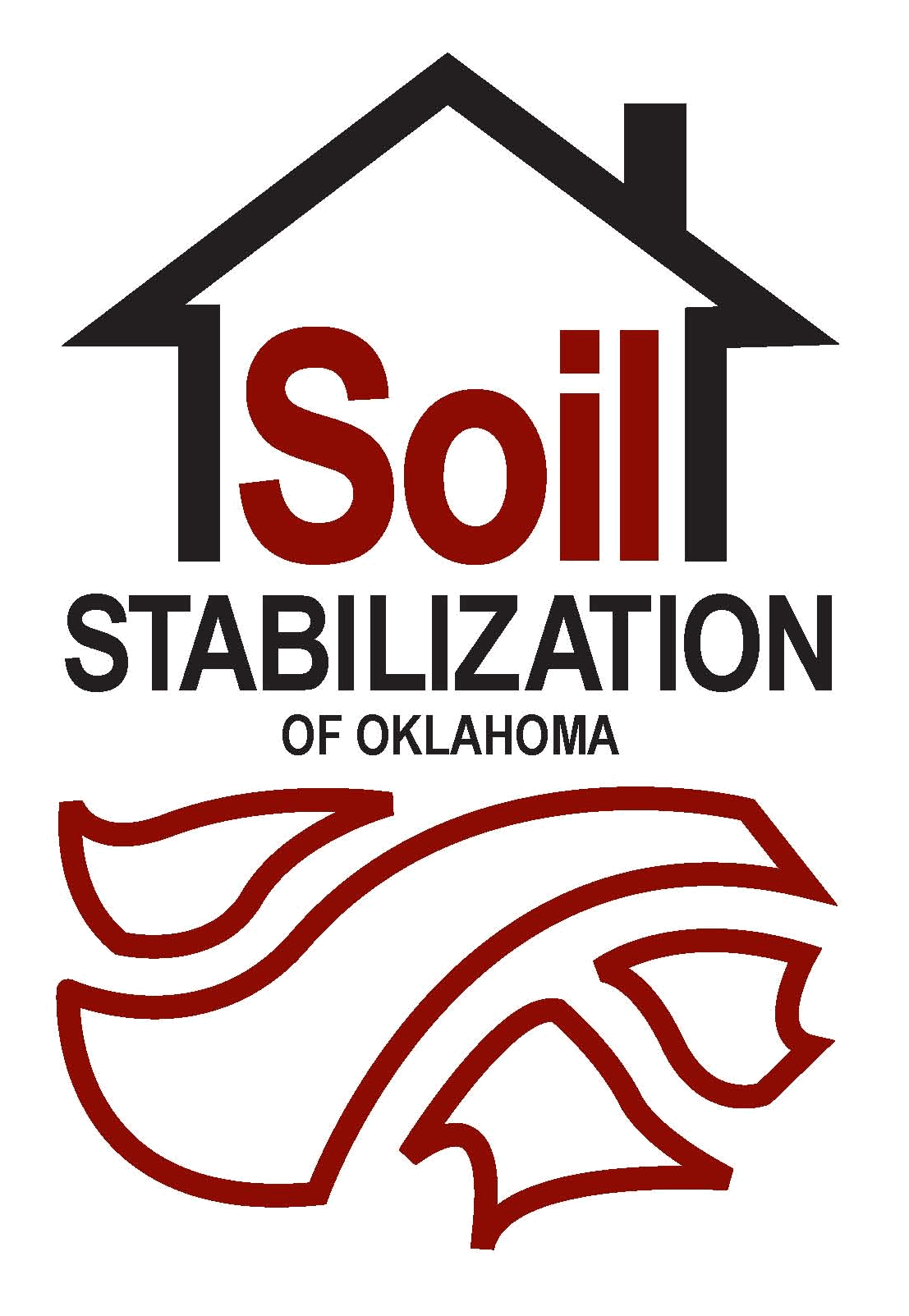 ™
Soil Stabilization of Oklahoma, Inc.
™
Soil Stabilization of Oklahoma, Inc.
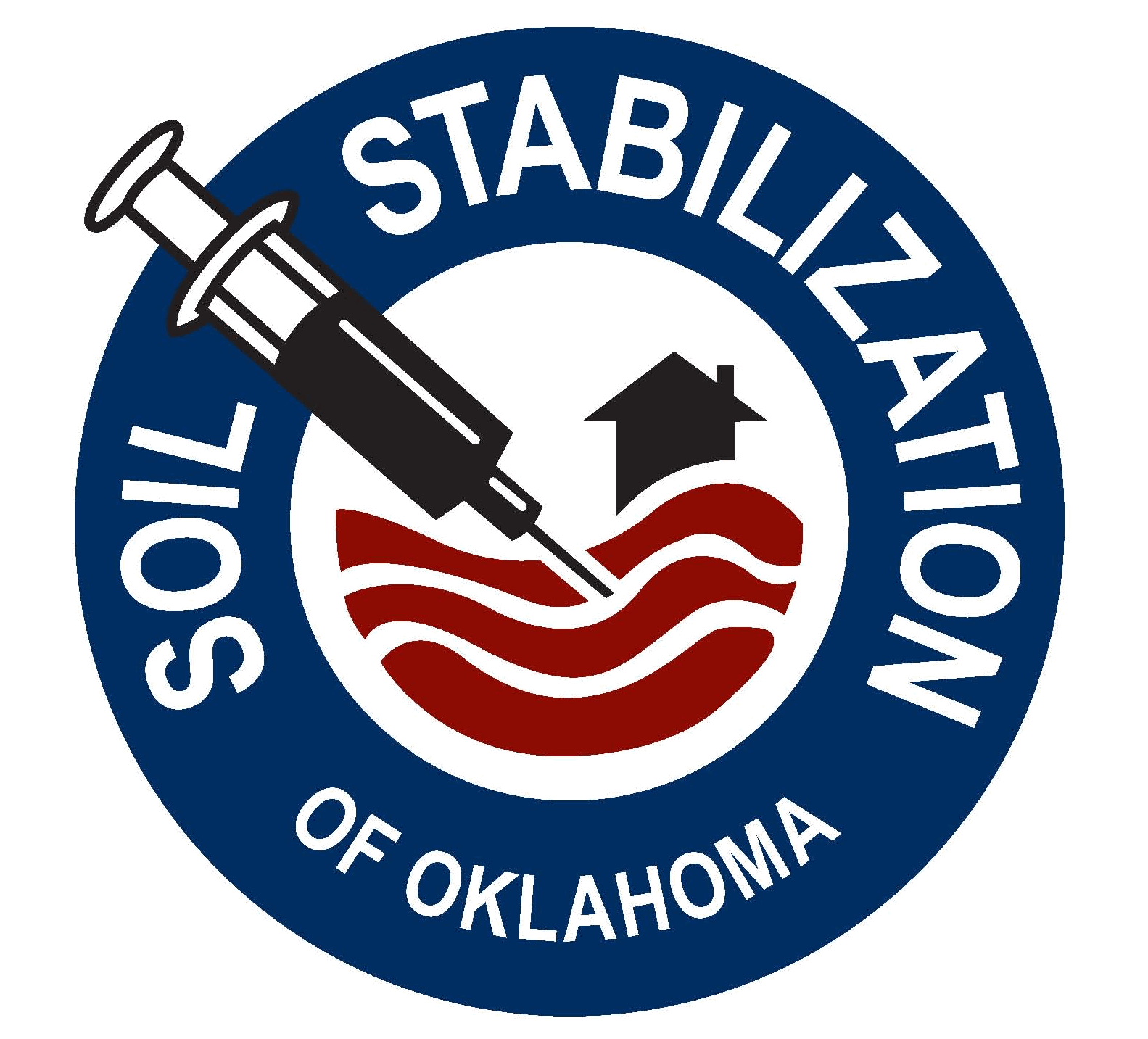 ™
™
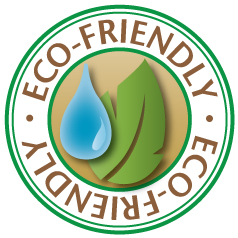
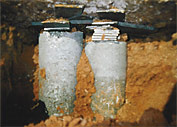
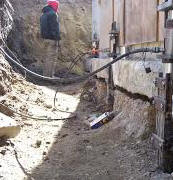
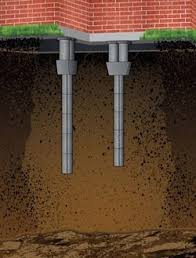

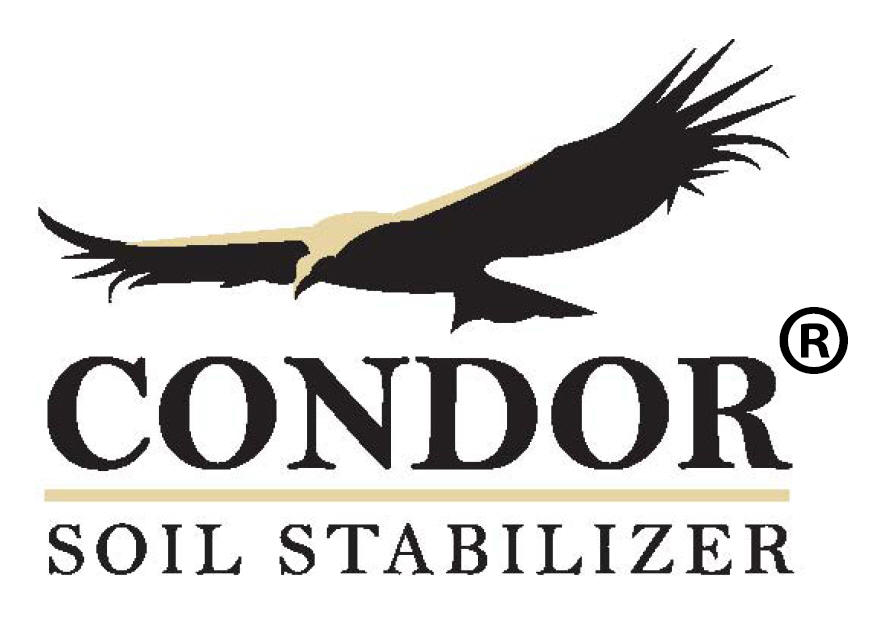
 First, the belled pier has a much larger surface area to provide
better support in weak soils. Second, belling the bottom of the hole in clay
soils prevents the clay from pushing the pier upwards due to swelling clay
along the vertical shaft of the pier.
First, the belled pier has a much larger surface area to provide
better support in weak soils. Second, belling the bottom of the hole in clay
soils prevents the clay from pushing the pier upwards due to swelling clay
along the vertical shaft of the pier.  widen (bell) out the bottom of the drilled pier column. (See drawing to the
left) This means that, if the
pier column is not resting on stable thick rock or is not deep enough to have a
significant portion of the pier in a stable clay moisture zone, the clay can
pull the pier vertically or cause the pier to sink. Condor SS can provide
stability for your homes piers and in addition, provide the equivalent of a
continuous deep pier for your home or building. This is because the Condor SS
can completely stabilize the critical zone of clay between the surface and 10-12
feet deep, the zone that would normally be subjected to moisture changes during extreme
wet or drought cycles.
widen (bell) out the bottom of the drilled pier column. (See drawing to the
left) This means that, if the
pier column is not resting on stable thick rock or is not deep enough to have a
significant portion of the pier in a stable clay moisture zone, the clay can
pull the pier vertically or cause the pier to sink. Condor SS can provide
stability for your homes piers and in addition, provide the equivalent of a
continuous deep pier for your home or building. This is because the Condor SS
can completely stabilize the critical zone of clay between the surface and 10-12
feet deep, the zone that would normally be subjected to moisture changes during extreme
wet or drought cycles.